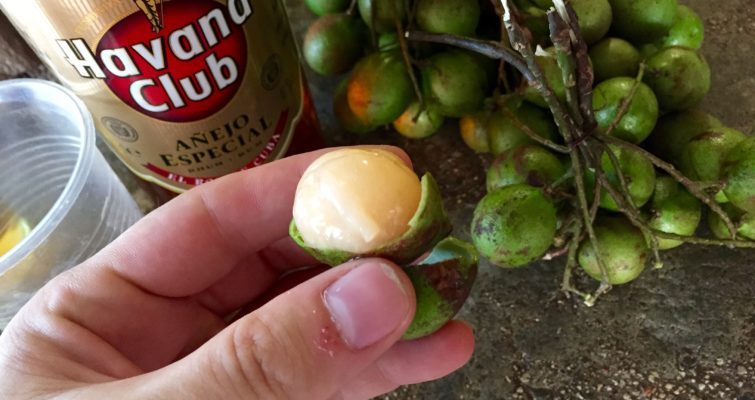
How to eat mamoncillo without dying
Mamoncillo is a fruit in the soapberry family. My friend Dayron and family introduced me to it a few weeks ago, as it was in season when I visited. In their rural town, you just pick mamoncillos off the trees, and they laughed about people in the city who pay money for them.
The fruit looks like a small lime, and in English it’s actually known as “Spanish lime.” But it’s more like a lychee than a lime. It’s basically got three layers: seed, pulp, and skin. The seed is pretty large, maybe an inch in diameter. It’s surrounded by a layer of pulp and a very thin green skin. The flavor is sweet and sometimes tart.
Dayron’s wife, sister-in-law, and the sister-in-law’s boyfriend offered to explain how it’s eaten… and how to safeguard against choking. I’d been taught to bite/suck the flesh from the seed, but evidently the large seed poses a choking risk. So Dayron’s wife Judith just chews the pulp and seed together, enjoying the flavor and then spitting it out like gum.
In the video, we talk about their relative Armando, who once accidentally swallowed a mamoncillo seed. He had to get the seed surgically removed. I know this because he has a couple big ugly scars to show for it. But there was more to the story than I realized:
A word of warning… I always hear that while traveling, you shouldn’t eat unwashed fruit skins, as it exposes you to local bacteria that can play havoc with your digestion. I’m guessing there’s also some risk in putting the mamoncillos in your mouth to bite through the skin. My system’s already used to Cuba, so I’m not worried – but you might want to be careful with it!




Write Your Comment